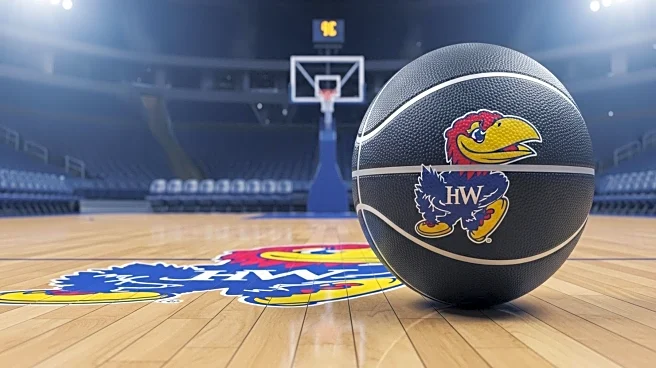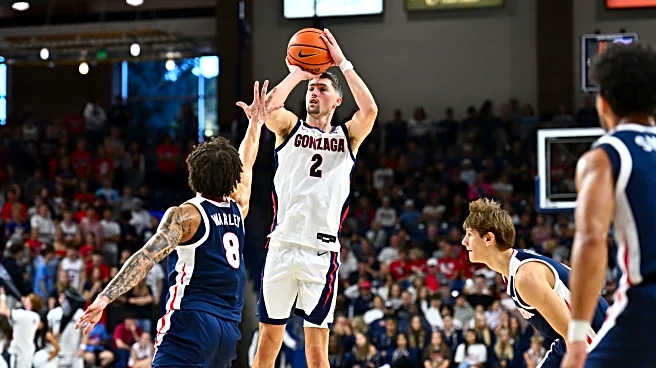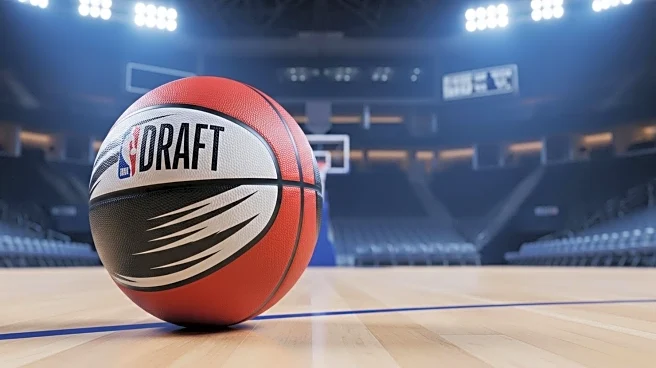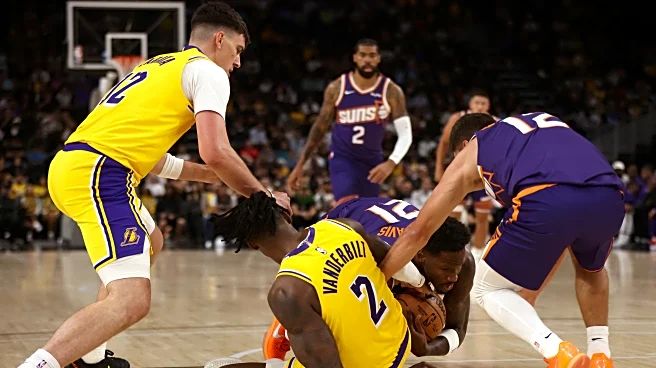It was spring 2023, and the end came hard. Gonzaga had been run off the floor by UConn, the kind of loss that makes the thought of looking forward to next season nearly nauseating. Drew Timme, Gonzaga’s
all-time leading scorer, had already made it clear back in February that his college career would close when the season did despite one more year of remaining eligibility. Dominick Harris hit the portal before the tournament dust even settled, Efton Reed followed, and then Hunter Sallis, the one most assumed would stay, packed up too. Rasir Bolton was out of eligibility. Malachi Smith hadn’t made it official but looked as good as gone. Julian Strawther was almost assuredly headed for the draft. Even Anton Watson’s return felt like wishful thinking at that point. Good news was hard to come by for a little while in Zagville.
Then in April, the Zags secured a surprise transfer commit from a kid from Ellensburg with a ridiculous jumpshot and an already well-established reputation across the eastern side of the state. With the commitment of Steele Venters, at least one thing about the following season was certain: the three-point shot was handled. He was that good. Gonzaga had its shooter, the perimeter was spoken for, and the offense had someone to orbit. Fans finally had a player to rally around, a semi-local kid, buzz-cut sharp, goatee clean, and a jumper that scraped the rafters before it dropped. The other dominoes would fall soon enough, but looking back through the haze of that spring, it’s wild to remember that the Steele Venters story started before even Ryan Nembhard’s, who committed a few weeks later. One of them is gone now, already his own chapter in program history. The other still hasn’t taken the floor.
Unfortunately, we all know what came next. Steele’s first season ended before it started, a knee injury in November that wiped away one of the only things Zag fans felt sure about. A year later, after patiently rehabbing, waiting through a season that desperately needed his shooting, it happened again; this time an Achilles. Two years gone, no games played. And now it’s somehow 2025, and somehow Steele Venters is a veteran on a team he’s yet to record a stat for. He knows the system, the language, the rhythm of it all better than almost anyone who’s actually logged minutes. He did the insanely difficult work of sticking around. And now, finally, we get to see it. What a rare gift it is to be a Gonzaga Bulldogs fan in the era of Steele Venters. After years of waiting, there won’t be a louder moment in the Kennel than the first time Steele Venters rises, releases, and watches that first three drop. More than any single game on the upcoming slate, that’s the moment I’m most looking forward to.
Eastern Promise
Before his arrival to Spokane proper, Steele arrived at Eastern Washington University as a walk-on in 2019, redshirted that first season, and by the time he left he’d become one of the best shooters the program has ever seen. His rise was the kind you rarely see anymore, it was slow, patient, and each step was earned through his consistency and bucket-seeking style of play. After the COVID-shortened 2020–21 campaign, he broke out as a redshirt sophomore, averaging 16.7 points a game on 45% shooting and better than 43% from three for the Eagles. Defenses keyed on him the next year and he still kept scoring, putting up 15.3 a night while leading EWU to a school-record 18 straight wins and a Big Sky regular season title.
That run ended in the NIT, but not before Venters delivered one of the great nights in program history, dropping 27 in a win over Washington State in Pullman and hitting a dagger three in the final seconds to seal it. By the time the season closed, he’d joined the thousand-point club, collected a Big Sky MVP trophy, and shot his way into the conversation as one of the most efficient wings in mid-major basketball. A walk-on turned conference player of the year, Ellensburg kid turned campus legend, and the rare story that still felt unfinished. Then came Gonzaga.
Then came the injuries.
Now comes what’s next.
By the Numbers
If you’re trying to guess what Steele Venters might give Gonzaga, the best evidence is still in the numbers. His 2022–23 season at Eastern Washington was a master class in consistency and efficiency. A 22.6% usage rate paired with a 107.2 offensive rating may not leap off the page until you remember he was also the focal point of every single defensive scouting report, the best individual player in the conference and a threat to score from anywhere. Teams loaded up on him every night, and he still hit 45.7% from the field and 37.1% from three. He finished top 10 in the Big Sky in scoring and field goals made, third in threes made, and ninth in overall shooting efficiency.
The shot profile tells the story. He went 7-for-7 on dunks, finished 57% at the rim, hit 52% on other twos, and 92% of his made threes were assisted. All of these stats point to a player who punishes defenses the moment they lose track of him. He doesn’t need a play drawn up—just a sliver of space or a late rotation. He moves with purpose, seeing the floor develop as he drifts into open space, the release already loaded before the defense recovers. Across 33 games, he hit double figures 28 times, scored 20-plus eight times, and posted a true shooting mark just under 58% despite being the focus of every defensive game plan. It’s hard to overstate just how good Steele Venters was in his final year at Eastern.
How that translates to the WCC is anyone’s guess, especially after two lost years, but his numbers suggest he doesn’t need heavy volume to impact a game. He’s efficient and capable of forcing defensive rotations the moment he crosses half court. With Steele, Gonzaga’s offense gets a jolt it hasn’t had since the departure of Julian Strawther: clean spacing and a shooter who makes every possession feel like a threat.
Load-Bearing Steele
What Steele Venters gives Gonzaga’s nightly box score this year will depend on how the roster shakes out. If Tyon Grant-Foster’s eligibility stalls and Jalen Warley proves more valuable as a Swiss Army knife at the 2 or 4, Steele Venters could conceivably start for the Zags on the wing, looking at around 25 minutes a night. In that world, he’s a steady offensive piece, not just a perimeter guy, putting up 12 to 14 points, 3 rebounds, and a couple of assists each night, with efficiency north of 57% true shooting and a plus-minus that trends positive whenever he’s on the floor. If the wing rotation stays crowded, his minutes probably sit closer to 10 or 12. That version of the year turns him into a catch-and-shoot swing guy, a spacing weapon who stretches defenses and flips tempo when the bench group takes the floor, something between Corey Kispert and Julian Strawther.
Either role puts him in a better position than any he’s had before. He’ll no longer draw the opponent’s top defender or carry the burden of creating every possession. With Braeden Smith orchestrating, Adam Miller threatening to let loose from dep, and a frontcourt packed with the most efficient scorers in the sport, the game will simplify, more open looks, quicker reads, cleaner rhythm. The shot will still define him, but the context finally fits it. For once, Steele Venters doesn’t have to save an offense, just make it hum.
Two Years Late, Right on Time
We still don’t know exactly what Steele Venters looks like inside a Mark Few offense, but Kraziness in the Kennel offered the clearest sign yet. He won the three-point contest handily, and then carried that same control and confidence into the scrimmage: 9 points in 11 minutes, 3-for-4 from deep, clean off the dribble, balanced in space, patient with the ball. His game has existed in the abstract for so long, but Kraziness in the Kennel made it real. The shot, the rhythm, the command, the charisma, the catharsis… it was all there.
It’s hard to even imagine what the last two years have demanded from that young man. The emotional highs lived from the edge of the huddle, the lowest moments endured in silence, behind the scenes; the work of building strength while the season unfolded without him, the work of building yourself back up. To go through that once is brutal; to survive it twice takes a kind of gumption very few full-grown adults possess. Grit, steadiness, discipline, consistency. Steele Venters has built his entire career on those qualities. The haircut never changes, the goatee stays sharp, the jumper repeats like clockwork, the effort never dips. He shows up. Every day. Every rep. Every shot. Clean, calm, repetitive, practiced motion. And now, after two years of waiting, we get to watch the guy who committed before Graham Ike did finally play for the Bulldogs.
The first time Steele Venters buries a three this year, the Kennel will erupt like it hasn’t in years. The points will matter, but not nearly as much as what they represent. After everything, Steele Venters is finally where he was always supposed to be: back in the game, back in the noise, back doing what he does best.











